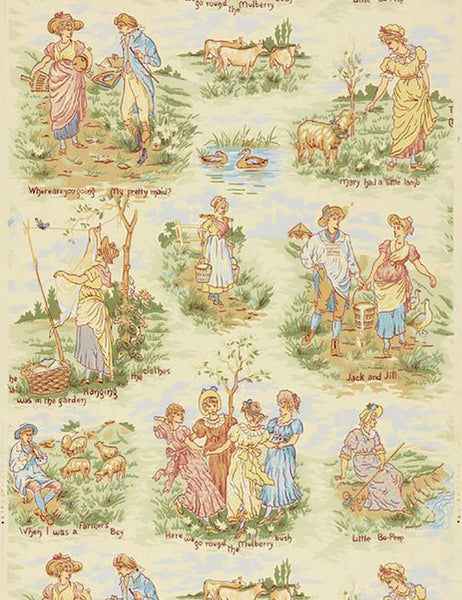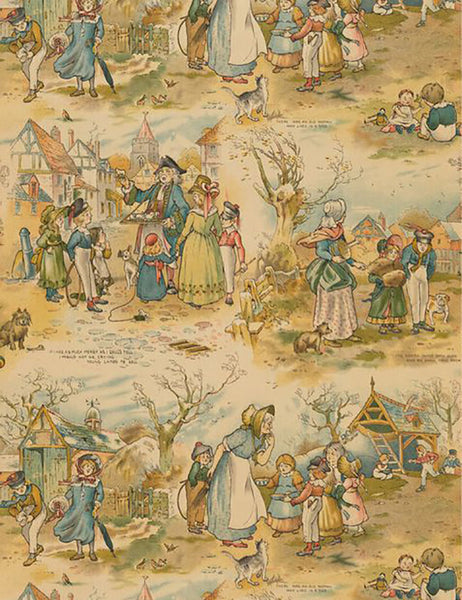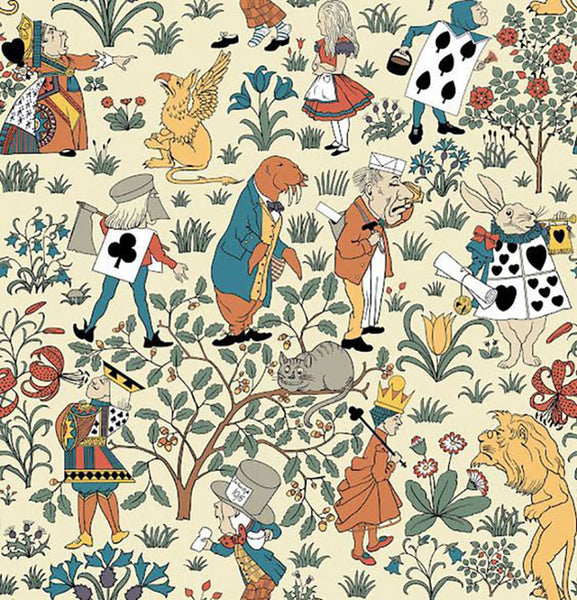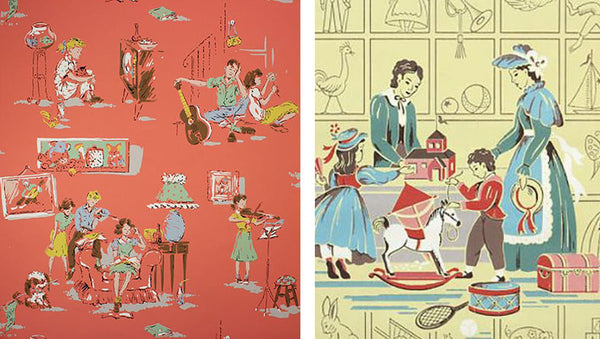Walls of Imagination Posted on 17 Oct 23:02
As an eighties baby I fondly recall the bright, bold, fun illustrations that adorned products made for children; from puzzles and games to pyjamas, from wrapping paper to wallpaper. A lot of this design looks very much 'of it's time' now but I loved it then, as I imagine did so many others. The below 1980s paper demonstrates so well the imagination and attention to detail (the little mole's jumper-pun!) that struck a chord with children of that era.

In fact, one of the reasons I decided to design wallpaper for children's rooms was a discussion with a good friend in which she told me how much she adored her Brambly Hedge bedroom wallpaper as a child (Brambly Hedge is the beautiful creation of illustrator Jill Barklem, who's books about a community of industrious mice are still very popular today).
Wallpaper designed specifically for children became popular in Victorian Britain with the growth of the middle classes after the industrial revolution; an increasing number of families now had separate rooms for their children, and money with which to decorate those rooms. Designs were initially instructive in nature, intended to contribute to educational and moral development.



The three examples above come from the extensive online collection of Historic New England
The increasing popularity also ran alongside 'The Golden Age of Children's Book Illustration' (roughly 1860-1930) ushered in by such eminent names as Walter Crane, Randolph Caldecott, Arthur Rackham and Kate Greenaway, artists who elevated book images from mere decoration to story-telling vehicles in their own right.
Most children's wallpapers were derived from children's literature and indeed Caldecott and Greenaway allowed their illustrations to be adapted for the purpose, while Walter crane collaborated with London wallpaper manufacturer Jeffrey & Co, whose aim was to create wallpaper as art. (They also printed William Morris' wallpaper). Crane's designs contained much detail and narrative, yet started to move away from the instructional nature of designs for children, as people increasingly endeavoured to create nurseries that were comforting, playful spaces. This shift can partly be attributed to the Arts and Crafts movement, spear-headed by Morris, which promoted the social benefits of art and decoration.


Walter Crane nursery wallpaper designs, clockwise from top, Nursery Rhymes (held at the Cooper Hewitt Collection), Sleeping Beauty, The House That Jack Built.
Charles F. A. Voysey was another designer who was very influential in wallpaper design at that time and he created some of the most wonderful papers for children. Cleverly, he combined intricate, imaginative themes with sophisticated repeating patterns, ensuring the designs looked harmonious once covering a whole wall. I believe this is one of the reasons for their enduring appeal, indeed numerous designs can be purchased today from Trustworth Studios, and House of Hackney re-issued the brilliant Alice in Wonderland paper in 2016.


With the trend towards fun and playful nurseries came a raft of new papers in the early 20th century, with a whole host of themes and characters represented, from the genteel to the joyful.




By the 1950s Disney got involved in wallpaper and the Peter Pan design below is one of my favourite vintage designs amongst those I have come across.




Inevitably, general trends in fashion, art and design impacted the designs of children's wallpapers and you can see so clearly the aesthetic trends of the time through them; bold colours and simplified shapes in the 1960s and early 1970s, and an array of colours and elaborate designs (and a little New Romantic flavour with the very popular Pierrot design - we had the duvet set!) in the late 1970s and 80s.






However, in the 1990s, with the advent of computer aided design and another aesthetic shift, this time away from the vibrant excesses of the 80s, wallpaper designs for children became much simpler and, in fact, paint was widely preferred. I noticed that a lot of papers from the 90s and early-to-mid 2000s employed simple repeats and often had little detail, perhaps due to the speed and ease of using a computer programme. Of course designs such as this have their place and can look great but it seemed a shame to me that there was a lack of imagination there. I believe that the detail and narrative quality of earlier designs is what made them so inspiring and memorable to children and that there is no reason why such magical designs can't be created now but with a contemporary aesthetic.
I'm happy to see that there is, again, a move towards imagination, storytelling and an appreciation of nature in design, which is being reflected in design for children, and hope that Renn Designs wallpaper contributes to creating magical, inspiring spaces for children to dream and play.
For an amazing selection of vintage wallpapers for sale see:
Hannah's Treasures
Rosie's Vintage Wallpaper
